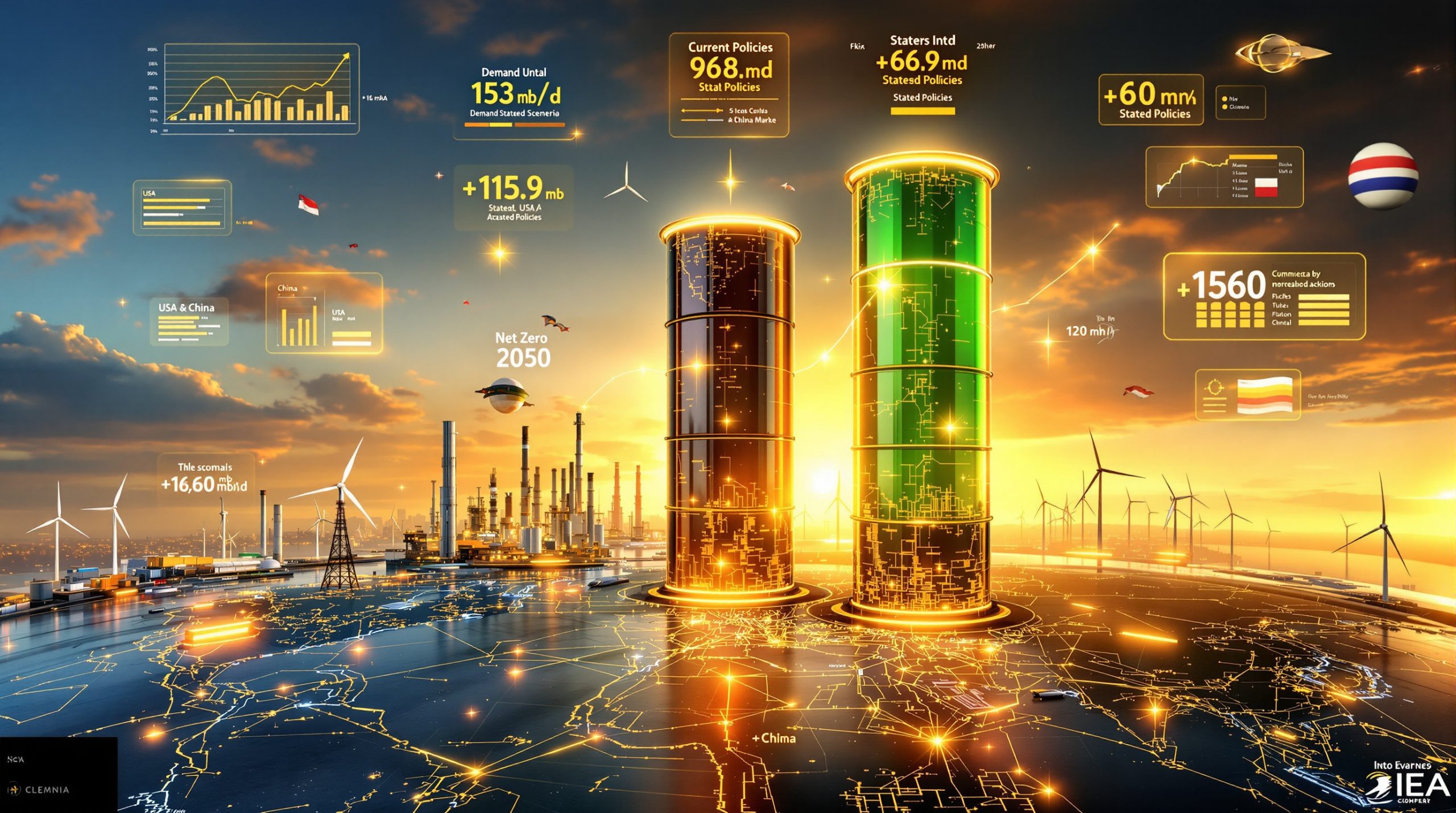How is Funding Supporting a Sustainable Rare Earth Magnet Supply Chain?
The race to secure sustainable rare earth elements (REEs) for critical technologies is intensifying as governments recognize their strategic importance. Recent funding initiatives are reshaping the global rare earth magnet supply chain, with significant implications for critical minerals energy transition and national security.
In the UK, the government has committed £11 million ($14.8 million) through 2027 to establish a sustainable domestic rare earth permanent magnet supply chain. This funding, facilitated by the Advanced Propulsion Centre UK (APC), represents a strategic investment in securing critical materials for the UK's automotive and renewable energy sectors.
"This is another significant demonstration of the UK government's support for the development of a sovereign, secure and sustainable rare earth supply chain. Vision is important, but execution is essential," notes Brett Lynch, IonicRE Executive Chairman.
Of the total funding package, £3.1 million has been directly allocated to Ionic Technologies, positioning the company as a key player in developing UK rare earth processing capabilities. The CirculaREEconomy project officially commences on August 1, 2025, with a focus on producing high-purity, separated rare earth oxides (REOs) essential for electric drivetrain applications.
What Are Rare Earth Permanent Magnets and Why Do They Matter?
The Critical Role of REPMs in Modern Technology
Rare earth permanent magnets (REPMs) contain elements like neodymium, dysprosium, and terbium that create exceptionally powerful magnetic fields despite their small size. These magnets are essential components in electric vehicle motors, wind turbines, defense systems, and countless electronic devices. Their unique properties enable the miniaturization and efficiency improvements that drive modern technology.
Strategic Importance in the Green Energy Transition
The transition to renewable energy and electric transportation depends heavily on REPMs. A typical EV motor contains 1-2kg of rare earth materials, while large wind turbines may require several hundred kilograms. As countries accelerate decarbonization efforts, demand for these materials is projected to increase by 300-500% by 2040.
Current Supply Chain Vulnerabilities
China currently dominates approximately 85% of global rare earth processing capacity and over 90% of magnet manufacturing. This concentration creates significant supply chain vulnerabilities, as demonstrated by recent export restrictions on critical elements like dysprosium and terbium implemented in April 2025.
"With the export of REPMs from China effectively turned off in April, the customer base has felt firsthand the risk of complete dependence on a monopolistic supply chain," explains Tim Harrison, IonicRE Managing Director.
Western nations are increasingly viewing this dependency as an economic and national security risk, driving investments in alternative supply chains.
How is the UK Government Funding Rare Earth Supply Chain Development?
The CirculaREEconomy Project: £11 Million Investment
The UK government's £11 million commitment through 2027 aims to establish a sovereign supply chain for rare earth permanent magnets. This funding is administered through the Advanced Propulsion Centre UK (APC) as part of their DRIVE35 collaborative initiative.
Strategic Allocation of Resources
Of the total funding package, £3.1 million has been directly allocated to Ionic Technologies, a subsidiary of Ionic Rare Earths (IonicRE). The project will focus on developing technologies to produce high-purity, separated rare earth oxides essential for electric vehicle applications.
Integration with Broader Industrial Strategy
This funding forms part of the UK's broader strategy to accelerate low-carbon technology development. The investment aligns with national objectives to reduce dependency on foreign supply chains while creating high-skilled employment opportunities in strategic sectors.
Tim Harrison notes: "We congratulate the UK government for delivering on their vision of sovereign supply."
Who Are the Key Players in This New Supply Chain?
Ionic Rare Earths and Its Strategic Position
Ionic Rare Earths (IonicRE), through its subsidiary Ionic Technologies, has emerged as a central player in the UK's rare earth strategy. The company's Belfast facility has already demonstrated capabilities in recycling and producing separated magnet REOs, positioning it for rapid commercialization of rare earth separation, refining, and recycling processes.
Consortium of Industry Leaders
The CirculaREEconomy project brings together a diverse consortium of industry leaders, including:
- EMR: A global sustainable materials company
- Less Common Metals (LCM): Advanced rare earth metal and alloy manufacturer
- Ford Technologies and Bentley: Automotive industry representatives
- Wrightbus: British bus manufacturer
- British Geological Survey (BGS): Providing scientific expertise
- GKN Powder Metallurgy and Vacuumschmelze: Materials processing specialists
International Collaboration
The project also involves collaboration with leading German REPM manufacturers to produce high-quality sintered magnets for e-motors. This international dimension highlights the interconnected nature of modern supply chains, even as countries seek greater domestic capabilities.
What Technologies Are Being Developed?
Advanced Recycling Methodologies
A cornerstone of the CirculaREEconomy project is the development of long-loop recycling technologies. These processes aim to recover rare earth elements from end-of-life products and manufacturing waste, creating a circular supply chain that reduces dependency on primary mining.
High-Purity Oxide Production
The initiative focuses on producing high-purity, separated rare earth oxides—a critical intermediate step in magnet manufacturing. These oxides must meet exacting specifications to ensure the final magnets deliver the performance required for advanced applications like EV motors.
Integrated Supply Chain Development
Rather than focusing on isolated components, the project takes a holistic approach to supply chain development, connecting raw material processing with alloy production and magnet manufacturing. This integration helps ensure that each step meets the requirements of subsequent processes.
What Are the Economic and Environmental Benefits?
Reducing Supply Chain Vulnerabilities
By developing domestic capabilities, the UK aims to mitigate the risks associated with concentrated global supply chains. This approach helps protect industries from price volatility, export restrictions, and geopolitical tensions that can disrupt access to critical materials.
"These initiatives enable the customer base to see that ex-China capability is possible with the support of Western governments," notes Tim Harrison of IonicRE.
Creating Skilled Employment Opportunities
The development of a commercial rare earth processing plant in Belfast Harbour is expected to create significant employment opportunities. These high-skilled positions support regional development goals while building domestic expertise in strategic technologies.
Environmental Sustainability Through Circularity
The emphasis on recycling and circular economy principles reduces the environmental footprint associated with rare earth production. Traditional rare earth mining and processing can generate significant environmental impacts, including radioactive waste management challenges and habitat disruption.
Energy Transition Support
By securing a sustainable supply of rare earth magnets, the project directly supports the UK's energy transition goals. Electric vehicles and renewable energy systems depend on these materials, making them essential to decarbonization efforts.
How Does This Compare to Global Initiatives?
China's Dominant Position
Despite these initiatives, China maintains a commanding lead in the rare earth value chain. Chinese companies control approximately 85% of global processing capacity and have invested heavily in securing raw material supplies from around the world, including significant interests in African deposits.
The export restrictions implemented in April 2025 on dysprosium and terbium demonstrate China's willingness to use its dominant position for strategic advantage.
US Strategic Initiatives
The United States has designated rare earth elements as critical materials and implemented funding programs through the Department of Energy and Department of Defense. Recent legislation, including the Inflation Reduction Act, provides incentives for domestic production and processing of critical minerals.
European Union Approach
The EU has established the European Raw Materials Alliance (ERMA) to address supply chain vulnerabilities across critical minerals, including rare earths. Several European countries are developing domestic processing capabilities, though progress has been slower than in the UK and US.
Emerging Producer Nations
Countries with significant rare earth deposits, including Australia critical minerals reserve, Canada, and Brazil, are developing mining and processing capabilities. IonicRE's November 2024 agreement with Viridis Mining and Minerals and SENAI FIEMG Innovation and Technology Centre aims to establish REO production in Brazil, demonstrating the global nature of supply chain diversification efforts.
What Challenges Remain in Building Sustainable Supply Chains?
Technical Expertise Gaps
Developing rare earth processing capabilities requires specialized technical expertise that has largely been concentrated in China. Building this knowledge base in Western countries represents a significant challenge that requires both education investments and knowledge transfer.
Economic Competitiveness
Chinese rare earth processing benefits from economies of scale, established infrastructure, and historically lower environmental standards. New facilities in Western countries must overcome these cost disadvantages while meeting stringent environmental regulations.
Securing Feedstock Materials
While recycling offers one pathway to securing raw materials, developing a robust supply chain also requires access to primary sources. Western countries are working to develop mining projects, but these face lengthy permitting processes and often encounter community opposition.
Market Uncertainties
Investments in rare earth processing face market uncertainties, including potential technology shifts that could reduce demand for certain elements. This risk is partially mitigated by government support, but remains a consideration for private investors.
FAQ: Rare Earth Supply Chain Development
What are the most critical rare earth elements for magnet production?
Neodymium, praseodymium, dysprosium, and terbium are the most critical elements for high-performance magnets. Neodymium and praseodymium form the base of most magnets, while dysprosium and terbium are added to improve temperature performance in demanding applications like EV motors.
How does recycling compare to mining for rare earth elements?
Recycling offers environmental advantages by reducing the need for new mining operations and associated waste. However, current collection systems capture only a small percentage of end-of-life products containing rare earths. Improving collection rates and processing technologies remains a challenge.
Will these initiatives make rare earth magnets more affordable?
In the short term, establishing new supply chains may increase costs as facilities operate below optimal scale. However, long-term benefits include reduced price volatility, improved supply security, and potential cost reductions through technological innovation and competition.
How long will it take to develop a complete supply chain outside China?
Developing a comprehensive rare earth supply chain outside China will likely take 5-10 years. While some capabilities can be established relatively quickly, building a complete ecosystem from mining industry evolution through magnet manufacturing requires sustained investment and policy support.
Conclusion: The Future of Rare Earth Supply Chains
The UK's £11 million investment in the CirculaREEconomy project represents a significant step toward developing sustainable, secure rare earth supply chains outside China. By bringing together industry leaders, research institutions, and government support, the initiative addresses a critical vulnerability in the transition to clean energy technologies.
As IonicRE's Brett Lynch noted, "Vision is important, but execution is essential." The success of this and similar initiatives will depend on continued commitment from governments and industry partners to overcome technical, economic, and market challenges. The stakes are high—secure access to rare earth elements will be a defining factor in countries' ability to meet climate goals and maintain technological competitiveness in the coming decades.
The CirculaREEconomy project demonstrates how targeted funding can catalyze supply chain development, bringing together diverse stakeholders to address a complex challenge. As this and similar initiatives progress, they will help reshape global material flows and reduce the concentration risk that currently characterizes the rare earth market.
Furthermore, the development of mineral beneficiation opportunities and focus on mining sustainability transformation will be essential components in building truly resilient and environmentally responsible supply chains for these critical materials.
Disclaimer: This article contains forward-looking statements regarding market projections and future developments in the rare earth supply chain. These projections are based on current market conditions and may be subject to change as the industry evolves.
Looking to Gain an Edge on the Next Rare Earth Discovery?
Stay ahead of significant ASX mineral discoveries with real-time alerts from Discovery Alert's proprietary Discovery IQ model, helping you identify investment opportunities in rare earths and other critical minerals before the broader market. Explore why historic discoveries can generate substantial returns by visiting our dedicated discoveries page.




